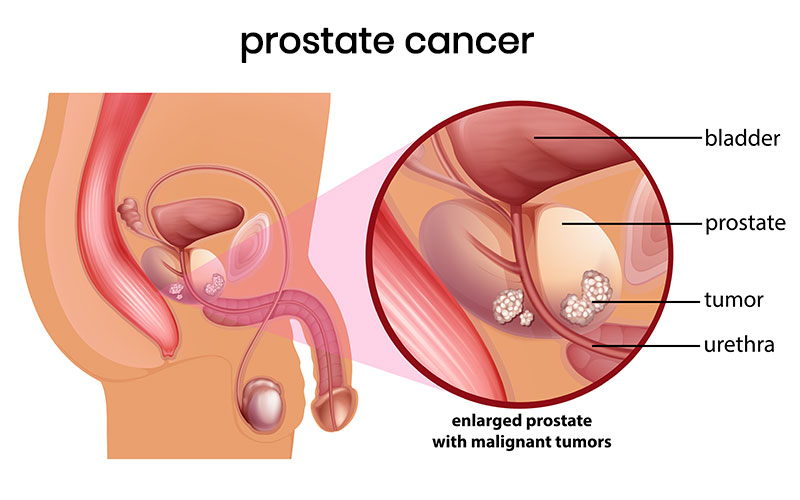PROSTATE CANCER
Prostate cancer is cancer that occurs in the prostate a small walnut-shaped gland in men that produces the seminal fluid that nourishes and transports sperm. Prostate cancer is one of the most common types of cancer in men. The prostate is a small walnut shaped gland in the pelvis of men. It is located next to the bladder and can be examined by getting a digital rectal exam. Prostate cancer is a form of cancer that develops in the prostate gland.
Types of prostate cancer
Almost all prostate cancers are adenocarcinomas. These cancers develop from the gland cells (the cells that make the prostate fluid that is added to the semen).
Other types of cancer that can start in the prostate include:
- Small cell carcinomas.
- Neuroendocrine tumors (other than small cell carcinomas)
- Transitional cell carcinomas
- Sarcomas.
Symptoms
Symptoms are often similar to those of benign prostatic hyperplasia (BPH). Men observing the following signs and/or symptoms should see their physician for a thorough examination:
- Blood in urine or semen
- Frequent urination, especially at night
- Inability to urinate
- Nagging pain or stiffness in the back, hips, upper thighs, or pelvis
- Painful ejaculation
Types of Prostate Laser Surgery
HOLEP: Photoselective vaporization of the prostate (PVP). A laser is used to melt away (vaporize) excess prostate tissue and enlarge the urinary channel.
Stage II: HOLAP: Holmium laser ablation of the prostate (HoLAP). This procedure is similar to PVP but uses a different type of laser.
HOLEP: Holmium laser enucleation of the prostate (HoLEP) A laser is used to cut and remove the excess tissue that is blocking the urethra. Another instrument is then used to cut the prostate tissue into small pieces that are easily removed. HoLEP can be an option for men who have a severely enlarged prostate.

